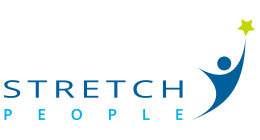Supporting Transitions
for the organisation, team and individual.
WHY STRETCH?
“Success is about your abilities, your aptitude and your attitude. Your abilities and aptitude may get you where you want to go, but it is your attitude that will really make the difference.”
Steve Holloway
Our Beliefs
We believe that they Why precede the What – the outcome precedes the journey.
We believe people are the heart and engine of organisations. When people are supported and engaged organisations thrive.
We believe change and support happen through conversations and connections not processes and procedures.
Our Purpose
To help people, teams and organisations transition through change in a way that supports engagement, motivation and well-being and results in greater organisational performance.
Our background
Stretch People is owned and run by Steve Holloway
Steve has an MSc in Executive Coaching from Ashridge Executive Education and over 15 years corporate experience in a variety of roles in Engineering, Project Management, Marketing Innovation and Learning and Development. He has led real and virtual teams, that were both multi-disciplinary and multi-cultural, and managed a range of projects from multi-million-pound engineering installations to international brand launch projects and organisational culture change projects.
As a result of his own experiences, when transitioning career and also when leading teams to higher performance, he recognises that he did not always have, or sometimes seek, the support he really needed. Therefore, some of those transitions took longer and created more personal stress than was necessary.
Consequently, he is passionate about helping people, teams and organisations transition more effectively through change in a way that increases individual satisfaction, happiness and well-being and supports a quicker shift to high performance and organisational success.





